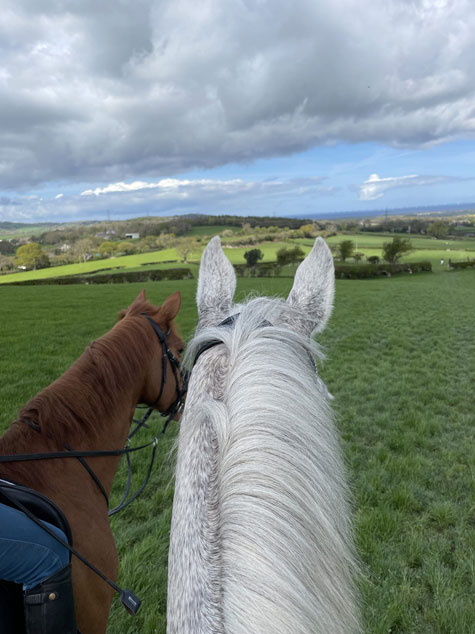Horse Riding
Be AdventureSmart: When horse riding
There is nothing quite like exploring the countryside with your best friend; for many, a beautiful view is best framed by a pair of furry ears! Whether you are riding, leading or driving, being responsible for a large and sometimes unpredictable animal brings particular safety considerations that must take into account the responses of you, your horse and other path users.
Be adventure smart: Plan for a great day exploring with your horse with our essential guide, developed with our partners, The British Horse Society (BHS).
Plan your day…
- tack check before setting off
- ride in a group – groups of 3 are best in case something goes wrong
- leave dogs at home – you cannot fully control a dog while mounted
Develop your skills…
- take the BHS Ride Safe training
- train your horse to open gates safely at home; allow more time for a gated ride
- train your horse to stand, so that if any difficulties arise you can deal with them while the horse is still
- be able to stop in the distance that you can see ahead
- ride slowly past all livestock
Be nice, say hi…
- call out “hello” and slow down well before you reach them, they may be frightened of horses or uncertain of how to act
- pass other people at walking pace
If you are walking or cycling and see horseriders…
- call out well before you get close so that both horse and rider know you are coming
- slow down as you approach horses and riders and be prepared to stop if asked to do so
- never pass close by a horse and be aware of pinch points in the track or on the road ahead
- pass slow and wide – at least a cars width if possible
- approach intersections and bends carefully, other people might be approaching on foot, bike or horseback
- put your dog on a short lead if you see horse riders approaching
Think in advance about where you are heading so that you can plan accordingly.
Be adventure smart: Plan for a great day with our essential kit guide for a good day exploring with your horse!
Essential Kit
High viz clothing and lights – don’t be a dark horse! Ensure both you and your horse are visible from above as well as from the front, rear and side.
Riding boots – you should be able to walk in them if necessary
A securely fastened, fitted riding hat that meets current, accepted safety standards
Correctly fitted body protector that meets current, accepted safety standards
Leather headcollar under the bridle with a lead rope rolled up and clipped to your saddle
A charged mobile phone which includes an ICE (In Case of Emergency) contact number
Map – if heading into unknown territory
If you’ve been unfortunate enough to part company while riding out, a tag attached to the saddle or bridle could help anyone who finds your horse to ensure they get home quickly and safely. Add the horse’s name, yard location and emergency contact information and make sure the tag is easily visible.
Hoof pick
Baling twine – handy in so many situations!
When riding on the beach...
Before you go, check that horse riding is permitted and know the limitations on times and areas.
Be respectful of other beachgoers, especially children and dogs. Keep to a walk when passing others.
Some horses find the beach exciting, be prepared for their reaction to a new environment. Ensure you are in control of your horse and prepared to stop if needed.
There could be areas of softer sand, debris, holes, or other hazards – you need to be able to avoid them.
Treat standing water with caution as it can be deep or have rocks hidden beneath the surface.
Be cautious of the sea…
It is important to know if the tide is coming in or going out.
Ride slowly when entering the water for the first time, some horses can be nervous of the water and breaking waves. Enter the sea by riding towards it at an angle rather than head-on and be prepared for your horse to spook at the waves.
Be aware of the shore under the water – some beaches slope out gradually whereas others shelve steeply or drop off suddenly.
Horses have difficulty turning when they swim – so keep this in mind if you venture into deeper water so that you can get back to shore safely.
Be aware that loose horses (and other animals) entering the water tend to head straight out to sea, which of course has a high risk unless they can be reached in time.
After your visit to the beach, remember to clean your tack and equipment. Saltwater can rust metalwork and cause leatherwork to dry and crack.
When riding on hills and upland country...
Beware of boggy, soft ground. If you are on a track the problem patches should be clear to see, so look out for areas of dark brown wet peat. These areas should be avoided by going carefully around the edge.
If your horse is unwilling to go forward, get off and lead him or give him to your companion while you check the ground on foot. Remember if he is adamant, he may know best.



